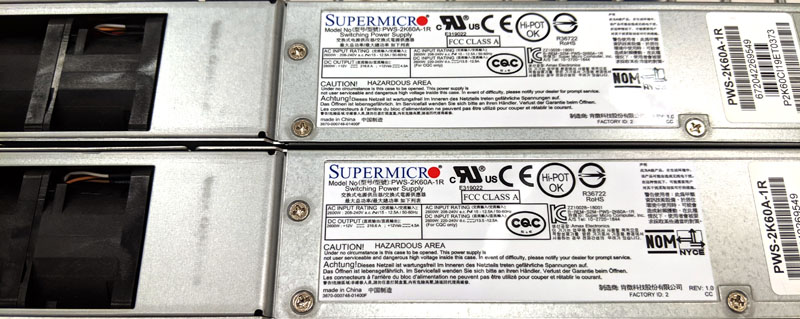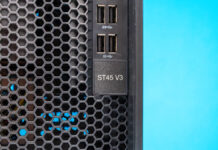Supermicro BigTwin SYS-2029BZ-HNR Power Consumption to Baseline
One of the other, sometimes overlooked, benefits of the 2U4N form factor is power consumption savings. We ran our standard STH 80% CPU utilization workload, which is a common figure for a well-utilized virtualization server, and ran that in the sandwich between the 1U servers and the Supermicro BigTwin SYS-2029BZ-HNR. With dense servers, heat is a concern, so we replicate what one would likely see in the field. This is the only way to get useful comparison information for 2U4N servers.

Here is what we saw in terms of performance compared to our baseline nodes (that have been upgraded to Intel Xeon Scalable nodes since our original Supermicro BigTwin NVMe Review.

As you can see, we are not getting the same shared cooling benefit that we see in other Supermicro 2U4N platforms. This is a tradeoff for having independent nodes with their own fans and the ability to cool very high-end setups.

A quick note here, our Supermicro BigTwin SYS-2029BZ-HNR review unit came with two 2.6kW power supplies. One of Supermicro’s innovations with the BigTwin is the family’s high-power, long, and narrow PSUs. In our testing, under load with 224 cores, one will want the 2.6kW redundant power supplies.
STH Server Spider: Supermicro BigTwin SYS-2029BZ-HNR
In the second half of 2018, we introduced the STH Server Spider as a quick reference to where a server system’s aptitude lies. Our goal is to start giving a quick visual depiction of the types of parameters that a server is targeted at.

This is a server with a mission. Put eight CPUs, 96 DIMMs, 24 NVMe SSDs, eight boot SSDs, four networking modules and up to eight other PCIe cards into a 2U form factor. The density here is significant, but it is not designed to match a 90+ 3.5″ bay 4U server in terms of raw capacity.
Final Words
Overall the Supermicro BigTwin SYS-2029BZ-HNR is very impressive. It is a server built for the high-end hyper-converged infrastructure market and sits above the company’s other 2U4N solutions and virtually every other 2U4N server on the market. That is a big deal. Supermicro made the tough trade-offs to deliver features like 12 DIMMs per socket, 205W 28 core CPU support, 3 UPI links, and 24x NVMe SSDs plus multiple add-in cards. The end result is something that can give users twice the density as 1U servers.




That is amazing what they can fit into a 2U. Especially considering dual sockets and 24 DIMMS per node. My 4U chassis with SM X11-DPI has two sockets and 16 DIMMS total (and only 12 of those 16 are usable if I want to have 6 channel). Quite amazing. But I’m homelab, so this is way out of my league. Cool though
This is amazing dual socket processor 4 node in 2U rack form factor server. Price very competitive with a giant brand.
My concern only at after sales support. Once they have it. They will be a leader for this region.